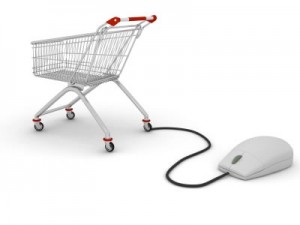 eCommerce is easily one of the coolest things to emerge in the last twenty years, and we have to admit, it makes Internet business pretty easy. With that in mind, more and more of our clients are starting to demand rock-solid eCommerce designs, and without the proper knowledge of what fits into that category, we’d be sunk.
eCommerce is easily one of the coolest things to emerge in the last twenty years, and we have to admit, it makes Internet business pretty easy. With that in mind, more and more of our clients are starting to demand rock-solid eCommerce designs, and without the proper knowledge of what fits into that category, we’d be sunk.
Thankfully, we understand that not everyone is as talented as us: Likewise, we also appreciate the need for a good list. Combining the two, we’ve produced our stellar checklist of simple, effective, and innovative ways to design a better eCommerce site during your next project. For the full scoop, just check below after the break, and keep an always open mind, Grasshopper—eCommerce is harder than you might think.
1.   Show Off Your Assets: Innuendoes aside, there’s no better place to start when creating an eCommerce build than with your client’s products. You’ll want to ensure that your merchandise is displayed as beautifully as possible, and with as much allure as you can manage. We mean it—show these puppies off! Just as the owner of a brick-and-mortar shop shows of his products in fancy displays, so should you pay equal attention to your product placement when creating an eCommerce solution for a client.\
2.   Reduce the Clicks! One of the easiest things you can do to improve your eCommerce design is remove as many obstacles between product selection and checkout as possible. In other words, make it bloody simple to buy your products through your eCommerce design. The clearer the process, the more comfortable the consumer will be. Reducing the steps between initial choice and purchase also reduces the need for further, complicated designs, saving you money and effort in the bargain.
3.   Keep Your Shelves Organized: We’ll bring out our old Shopkeeper friend one more time to illustrate a point: When you walk into a store, you can be damn sure the owner has taken every step he can to keep things organized. This helps you find what you want quickly, and also inspires confidence in the purveyor itself. This isn’t hard to do in your digital designs, either. Include extensive categorizing (think Amazon.com) that makes it simple to find a specific product. Also, ensure your designs flow naturally, and aren’t unnecessarily confusing to the consumer. The safer you can make them feel, the easier it will be to move product in the end.



![Know Your Graphic File Types! [Infographics]](https://dc-prod-blog.sfo2.digitaloceanspaces.com/uploads/2015/09/graphic-design-explained.jpg)